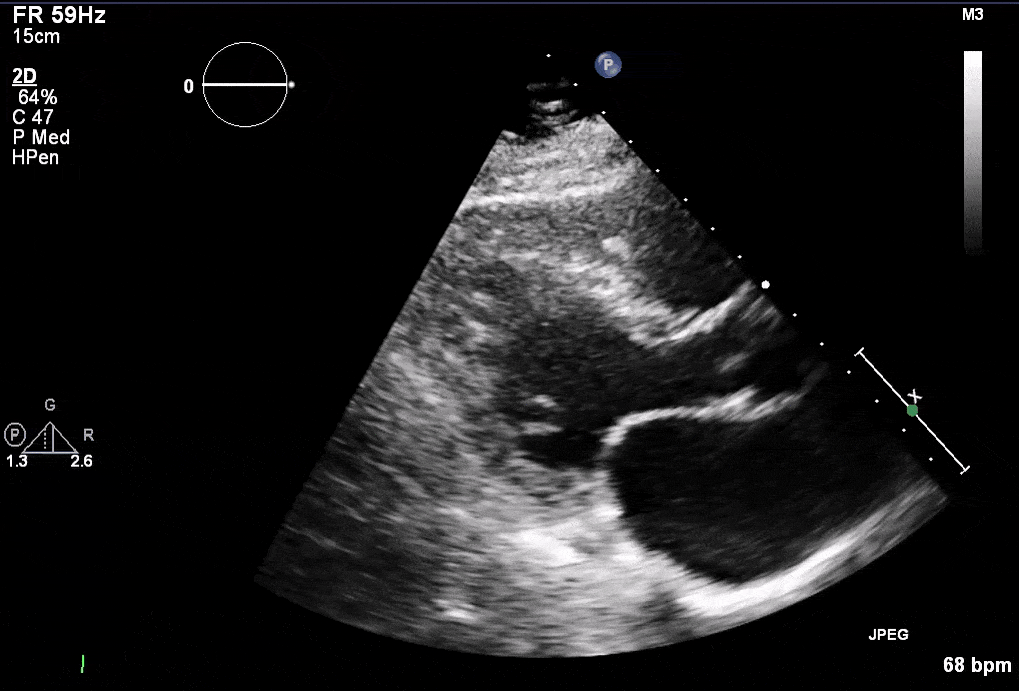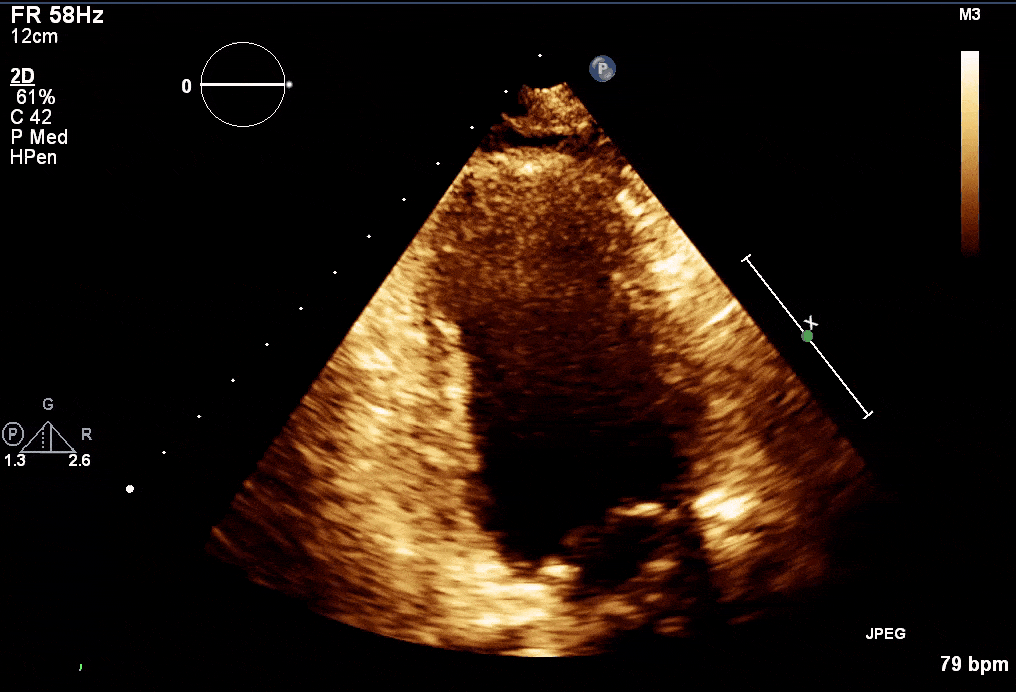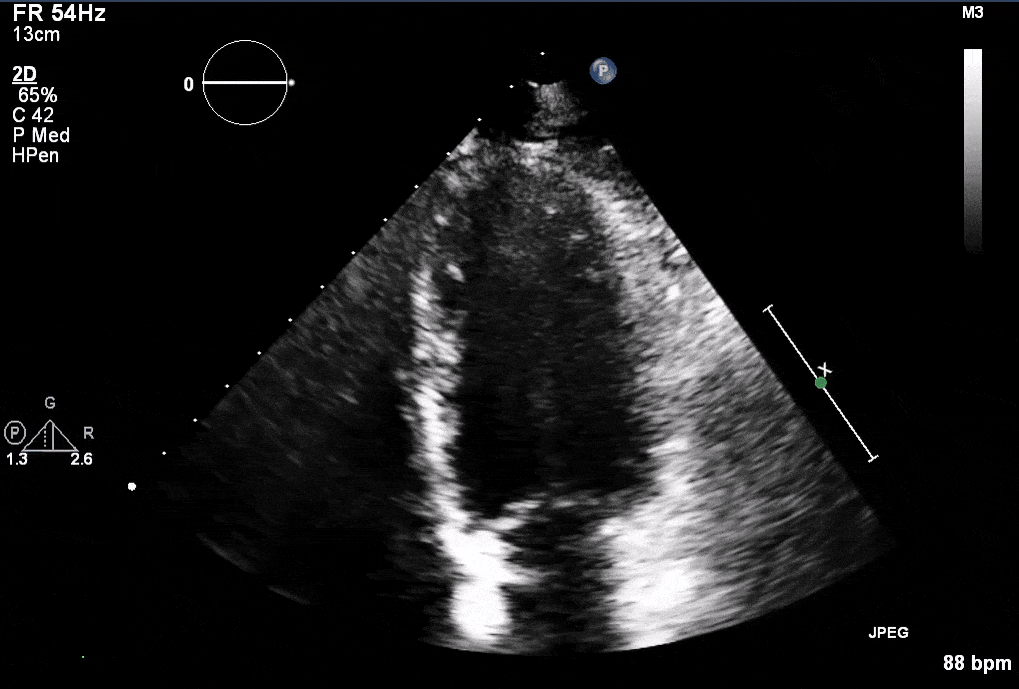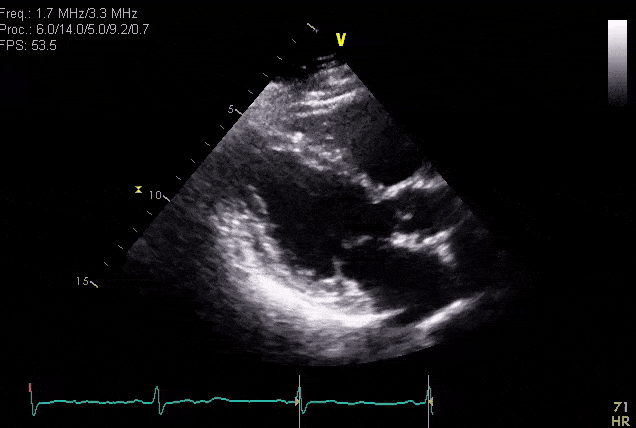- Also known as stress induced cardiomyopathy.
- Results in usually transient left ventricle dysfunction. Often patients have good prognosis as there ventricular function will usually recover within a few months.
- Need to rule out significant coronary disease to make diagnosis.
- Thought to be related to catecholamine surge.
- Most commonly seen in postmenopausal women.
- Need to consider a pheochromocytoma especially is recurrent.
Clinical Presentation
- Typically presents like an ACS presentation with chest pain, ekg changes, and troponin elevation.
- EKG features can include diffuse T-wave inversions, ST elevation, also typically get QT prolongation with ST/T waves changes.
- Complications from Takotsubo can range from life threatening arrhythmias such as VT, LVOT obstruction from basal segment hyperdynamism, heart failure, LV thrombus, significant MR from SAM.
Example 1 Apical Akinesis
Variants of Takotsubo
- Apical akinesis the most common variant. Usually has some degree of midventricular involvement.
- Isolated midventricular.
- Reverse Takotsubo or basal akinesia.
Treatment
- Beta-Blocker
- ACE-Inhibitor
- Anticoagulation: Treat is known LV thrombus. Consider prophylactic anticoagualtion especially in high risk.
- Repeat TTE in 1-3 months, usually see recovery of LV function.
- If shock and LVOT obstruction, consider heart rate control, and phenylephrine.





